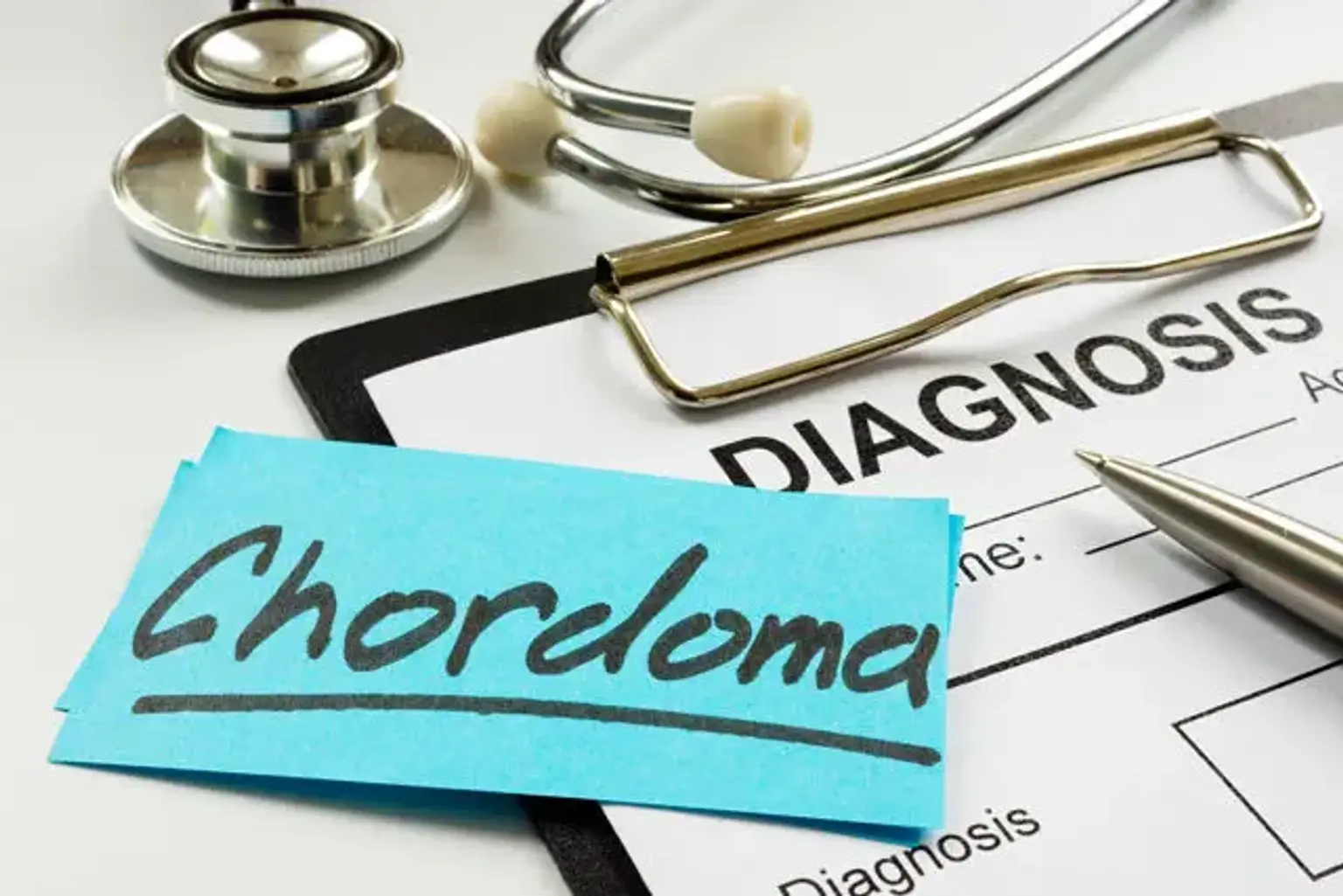Chordoma
Overview
A chordoma is a form of sarcoma that is low-grade, slow-growing, but locally invasive and aggressive. Chordomas develop from notochord remnants and appear between the clivus and the sacrum, anterior to the spinal cord, along the midline spinal axis.
Chordomas are most commonly seen in the lower back (sacral region) and the base of the skull ( one-third of chordomas). Chordomas develop from notochord remnants, the embryonic tissue that eventually forms the core of spinal disks.
